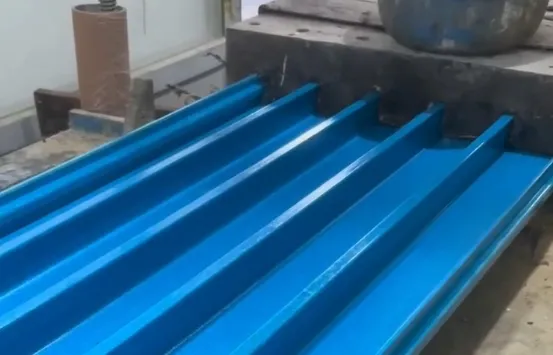loading...
- No. 9, Xingyuan South Street, Dongwaihuan Road, Zaoqiang County, Hengshui, Hebei, China
- admin@zjcomposites.com
- +86 15097380338
- Welcome to visit our website!
FRP Handrail Cost Comparison and Market Insights for 2023
Understanding the Cost of FRP Handrails
In recent years, the use of Fiber Reinforced Polymer (FRP) materials has gained popularity across various industries, particularly in construction and safety applications. One significant application of FRP is in the manufacturing of handrails. Not only do these handrails offer structural integrity and durability, but they also come at a varied price point that is influenced by several factors. In this article, we will explore what contributes to the price of FRP handrails and why they are becoming a preferred choice for safety solutions.
What are FRP Handrails?
FRP handrails are constructed from a composite material that combines polymer resin and reinforcement fibers, typically fiberglass. This combination results in a lightweight, yet exceptionally strong material that is resistant to corrosion, UV radiation, and extreme weather conditions. These properties make FRP handrails suitable for various environments, including coastal areas, chemical plants, and general outdoor settings. Their design versatility means they can be tailored for different applications, from residential to industrial.
Factors Influencing FRP Handrail Prices
1. Material Quality The price of FRP handrails can significantly vary based on the quality of materials used in their construction. High-quality resins and fibers will typically lead to a higher price, but they also offer superior performance and longevity. Investing in better materials can reduce long-term maintenance costs and replacements.
2. Manufacturing Process The manufacturing techniques employed to produce FRP handrails also affect their pricing. Handrails made using advanced technologies such as pultrusion or resin transfer molding tend to be more expensive due to the sophistication involved in the process. These methods offer consistent quality and can produce complex shapes, adding to their functionality.
3. Dimensions and Customization Standard-sized FRP handrails will generally cost less than custom-made options. If you require handrails of specific dimensions, designs, or performance characteristics, the customization process will increase the price. However, customized handrails ensure that the specific needs of your project are met, which can be crucial for safety and compliance.
frp handrail price

4. Finish and Aesthetics The aesthetics of the handrails can also influence their cost. Handrails that come with additional finishes (like custom colors, textures, or coatings) will likely be priced higher than standard options. A well-finished product can enhance visual appeal and blend better with the surrounding environment, which is particularly important in residential applications.
5. Installation Costs Beyond the price of the handrails themselves, installation costs should also be considered. While FRP handrails are generally easier to install due to their lightweight nature, hiring professional installers will incur additional expenses. The complexity of the installation site can also affect labor costs.
Why Choose FRP Handrails?
Despite the varied pricing, many choose FRP handrails for their long-lasting benefits. The overall lifecycle cost of FRP handrails can be lower than that of traditional materials like wood or metal due to their resistance to environmental degradation, which reduces the need for maintenance and replacement.
Additionally, FRP handrails are often lighter, making transportation and installation easier. They can also be molded into various shapes and sizes to fit unique architectural designs, making them suitable for a wide range of applications from commercial to residential projects.
Conclusion
In conclusion, the price of FRP handrails can vary based on multiple factors, including material quality, manufacturing methods, customization options, aesthetics, and installation requirements. While they may be a higher initial investment than traditional handrails, the long-term benefits, durability, and maintenance savings often outweigh the upfront costs. As safety and aesthetic considerations continue to shape construction standards, FRP handrails are poised to remain a popular choice for enhancing safety and structural integrity in various environments. When selecting FRP handrails, it's essential to weigh these factors against project requirements and budget considerations to make the most informed decision.
-
GRP Structures: The Future of Lightweight, High-Performance EngineeringNewsJun.20,2025
-
FRP Water Tank: High-Performance Storage for Corrosive and Clean Water SystemsNewsJun.20,2025
-
FRP Square Tube: The New Industry Standard for Chemical and Structural ApplicationsNewsJun.20,2025
-
FRP Pultruded Profiles: The Ultimate Choice for Lightweight Structural StrengthNewsJun.20,2025
-
FRP Handrails: The Safer, Smarter, and Stronger Choice for Modern InfrastructureNewsJun.20,2025
-
FRP Grating: The Smart Solution for Durable, Lightweight Industrial FlooringNewsJun.20,2025
-
Why Choose a Galvanized Water Tank for Your Storage NeedsNewsMay.21,2025
